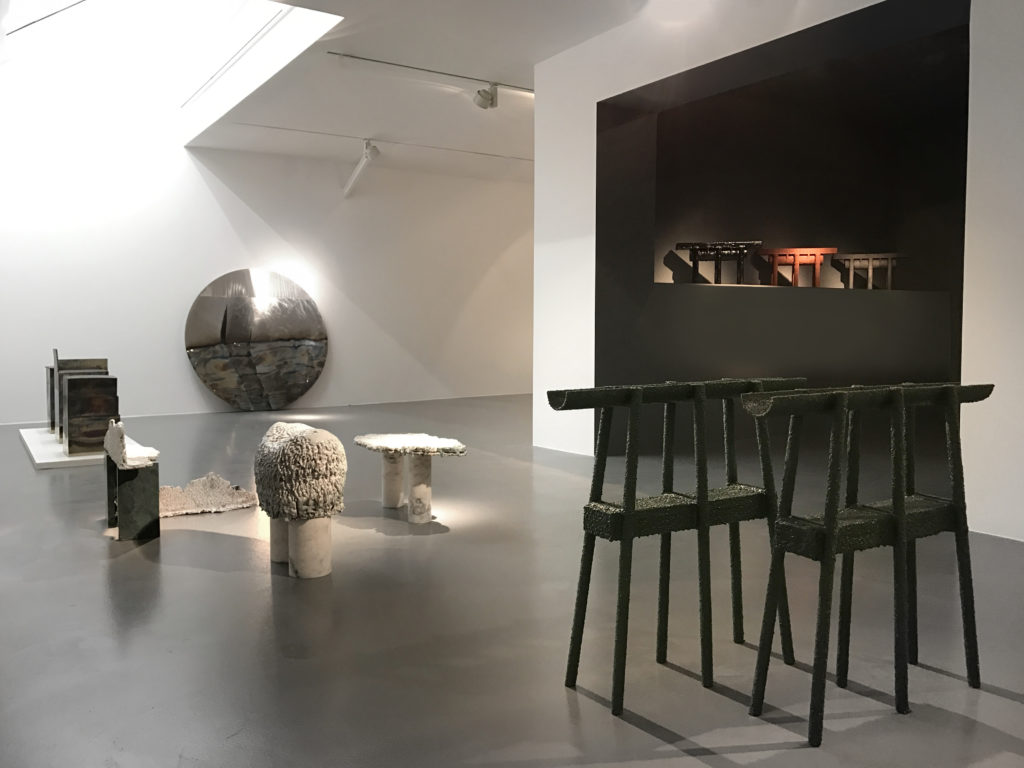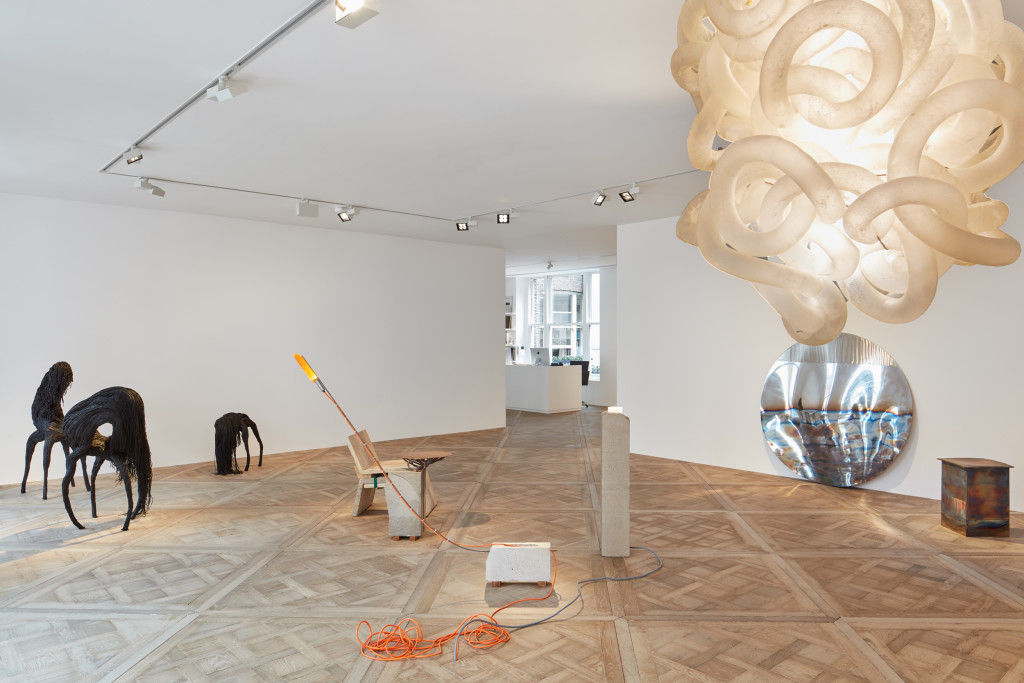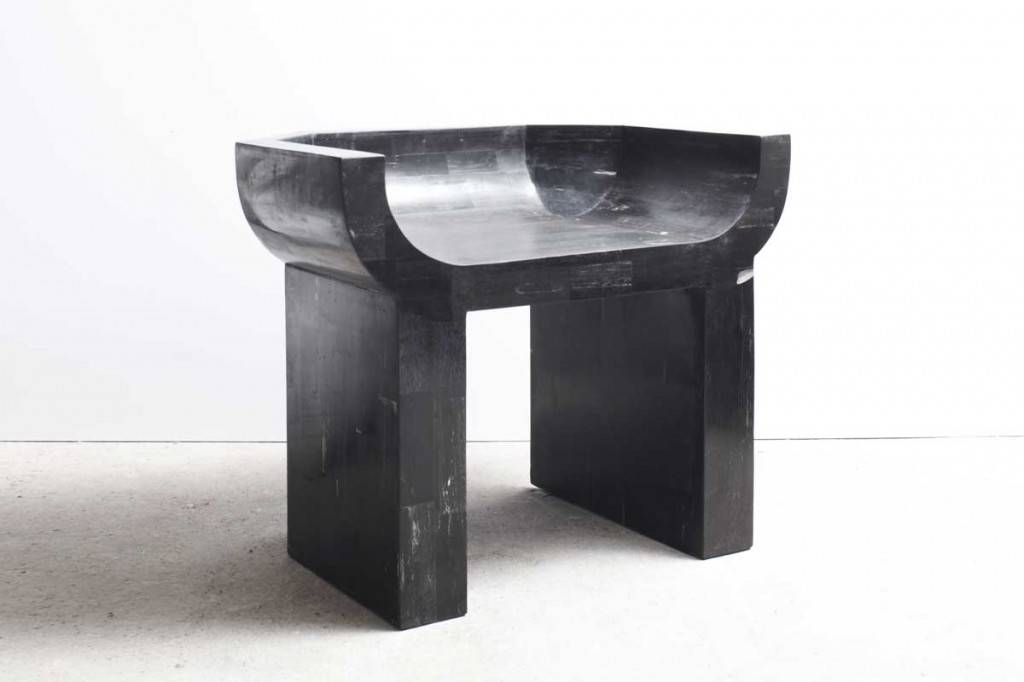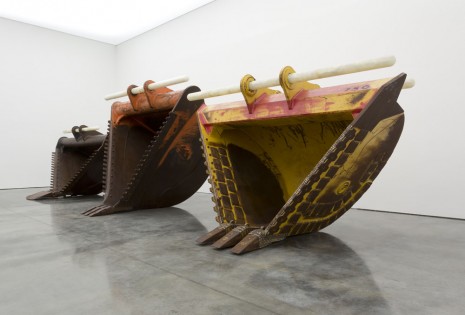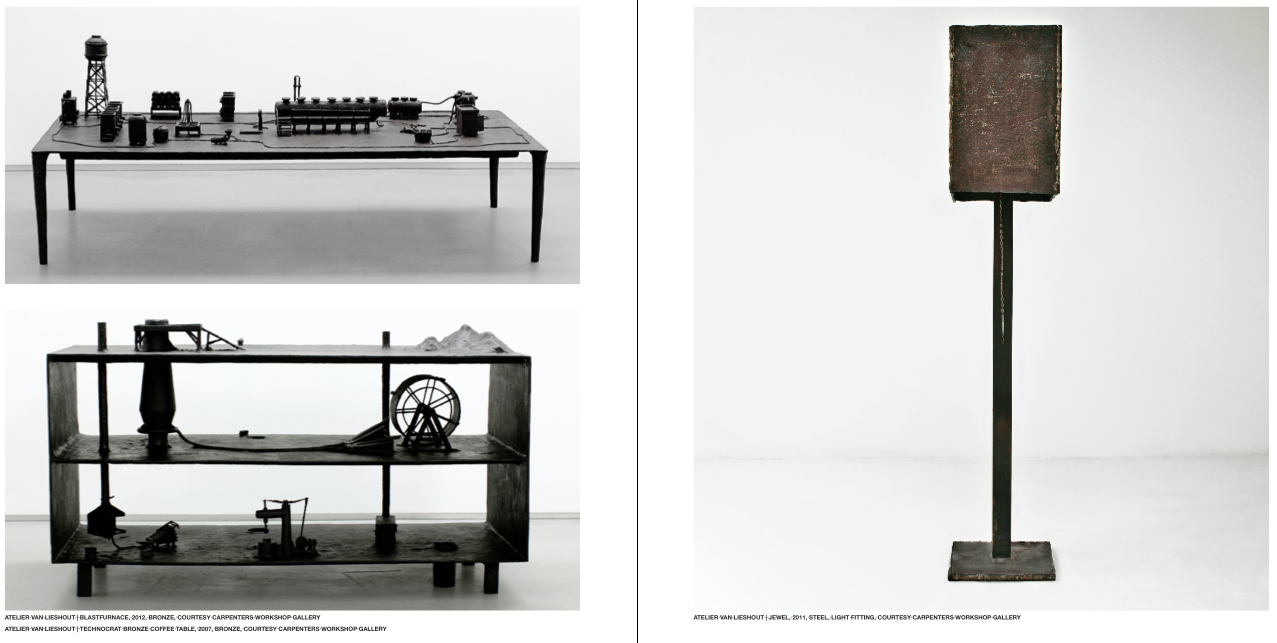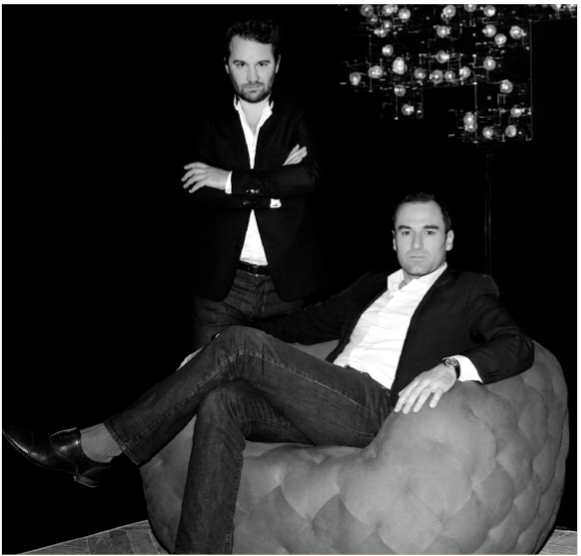
JULIEN LOMBRAIL & LOIC LE GAILLARD ON CARPENTERS WORKSHOP GALLERY
By Crash redaction
AFTER OPENING THE CARPENTERS WORKSHOP GALLERY IN LONDON, FRENCH ARTISTS JULIEN LOMBRAIL AND LOIC LE GAILLARD NEXT LAUNCHED A MONUMENTAL SPACE IN THE MARAIS NEIGHBORHOOD OF PARIS. BY SEEING FURNITURE AS A FORM OF ART, THE GALLERY HAS HELPED BRIDGE THE GAP BETWEEN DESIGN AND CONTEMPORARY ART, AS COLLECTORS FROM AROUND THE WORLD FLOCK TO THEIR GALLERY… MEETING WITH JULIEN LOMBRAIL.
Tell us about your career so far…
I started out trying to produce movies and music when I was 20. I’ve always been drawn to art and artists. Even though I’m not an artist myself, I’ve always wanted to work on projects with artists. Back then, this meant becoming a producer, and that’s how I started out. Of course, it didn’t go well at all for me. Then when I turned 21, my mother, Ingrid Donat, had to start working for financial reasons, and she needed me to help with the bronze furniture she was making. Several people had told me about the Barry Friedman Gallery in New York, so I went there, showed him my mother’s work, and he asked us to set up an exhibition. Of course, once I got back to Paris we had to actually produce the furniture! And that’s really how it all started. I went to the foundry and realized we really needed some money to finance our production. So I called the gallery in New York and asked for some funding, and they financed the exhibition. It was a totally new way of working, American style. Everything was finished and delivered on time, and the show was a total success! I didn’t receive any salary, but did get some commission on the sales. After that I decided to move to New York, where I told Barry Friedman I could reinvest the money I had made by buying items from his stock and selling them in France. He accepted the deal and “opened” his stock to me. I bought Ron Arad pieces without even knowing who he was, and paid extremely favorable prices. I then brought them to France and sold them for twice what I paid! Every time I sold one, I bought two more. After that I opened my own Galerie Julien Lombrail in Paris, and also developed a passion for Man Ray pieces that I stumbled upon. I also showed photography and other pieces by Ron Arad. For the inauguration I started looking for an artist to do a big fresco across my storefront, and I got JR! JR also used my bed to complete the work. Later on, in 2005, Loic Le Gaillard gave me a call after my father had mentioned me to him. He was about to open a gallery in a London carpentry workshop and call it the Carpenters Workshop. So we decided to invest in the site together for one year. At first we wanted to sell contemporary art. For our first show we got Chinese artist Zhang Huan, who is at White Cube now. Pretty soon we realized we would need a lot of resources to develop artists, so we switched to designers instead. We met with Ron Arad, Zaha Hadid, and Marc Newson, but they didn’t want to work with us! We were too young. So we turned to the design schools and luckily happened upon the right one: the Design Academy of Eindoven, where we discovered a new wave of Dutch designers like Droog Design and Joep van Lieshout, as well as a lot of new graduates like Sebastian Brajkovic, Maarten Baas, and Jeroen Verhoeven. And that’s how it all began.
Your gallery has introduced a completely new way of working with designers…
What interested us at first was turning a functional object into a sculpture. Then we realized we also had to maintain a consistent aesthetic. We took Galerie kreo as our model, especially with the work Didier Krzentowski did with the Bouroullec brothers. Of course our aesthetic is nothing like Galerie kreo. We’re less minimal, more organic, with a pinch of humor thrown in.
Do collectors think of the pieces you sell as art or design?
They don’t really ask those kinds of questions. They just want a piece they can buy and add to their collections. It’s us who have to worry about all the codes of art and sculpture. We produce limited-edition, signed series of only eight pieces that are stamped, numbered, and come with certificates of authenticity. We’re going to put out the first monograph on Random, for example.
Some people have trouble walking this line between art and design, like Joep Van Lieshout, who has always had trouble competing in contemporary art because everyone thought of him as a designer…
These kinds of issues are great, because they get people talking. And in the end, that’s what counts. A Joep van Lieshout lamp can be presented in either a design context or an art context. But he has always chosen to work with art galleries.
Let’s talk money: do your pieces fetch the same prices as contemporary art?
Our prices are a little lower, since there is still a psychological barrier there. But it’s all going to change once that barrier is overcome. Since design is still seen as primarily functional, people are less inclined to spend But when we see furniture like a Jean Prouvé piece going for millions, we have to think that mindsets are starting to change, no? Yes, they are. And I would also put Eileen Grey and Jean Royère in that category. We haven’t quite reached the contemporary art level, but I think things are moving in the right direction.
Has your client base changed at all throughout the years?
Our market is seeing a lot of rapid growth. We have to update our offer every day. Since we’re lucky enough to move our stock rather quickly, we almost always have new collections. Our client base has grown much wider and is very international. But our customers mostly collect art and not design, which is still kind of marginal. At the same time, we have a few clients who are slowly becoming design collectors because we keep managing to sell them new pieces. But it’s been a very natural transition for them.
After starting out in London, was it an important step for you to move to Paris?
It was. First of all because we are French, but also because our Paris space gives us the means to put on larger shows that just wouldn’t be possible in London. Paris is a giant hub where you can always do business, even with non-French people. A lot of people pass through Paris and we’re lucky to be on their radar with what we do. For example, we do our best business during fashion week. We also work with a few interior designers for high-profile international customers who are based in Paris. So Paris is a great location. It has offered more than we expected and we love it.
How has the Paris art world reacted to your gallery?
It’s been mostly positive. Some major names in the profession have come by, both from museums like the Centre Pompidou and the Musée des Arts Décoratifs, as well as gallery owners like Emmanuel Perrotin and Thaddaeus Ropac. We’ve had nice, positive experiences with all of them. It’s like we have our little island that mostly belongs to us. There’s very little competition, even too little competition since it’s better to have a bigger, more dynamic market. But the art world has respect for us, and it’s great because everyone knows how hard it is to put out design. A lot of galleries have tried their hands at it, like Perrotin, Ropac, and Gagosian. You really have to love it and keep up on what’s going on. But the more risks you take with innovative projects, the more success you have!
Are you still on the lookout for new talent?
Always! We get a lot of proposals and we consider everything. We’re always visiting new studios. Our goal is to be an effective tool for art and design. We love young artists, and now we have the resources and a little experience to put new projects together.
Design seems to be having a lot of trouble in Italy, especially with design firms…
I don’t even go to the Milan Furniture Fair anymore, because we just don’t want to be influenced by that kind of design. A huge gulf has been developing, as major design firms are becoming more and more expensive. They have no limits. They’re rerelease designs and charge a fortune. Even if you go to Knoll, everything is expensive and you’re just going to throw it out when it’s all used up. We prefer to work with collector’s pieces, and there is a market for that: these are pieces that gain value over time. There’s potential there, and all the conditions are right for value to go up. If a piece is exceptional, it will always be exceptional. For me, a limited edition has to remain just that: limited.
How did you discover Random?
Through Natalie Kovacs, a curator who represents Joep van Lieshout, among others. For a while, Random met with a lot of different galleries and no one wanted to show them. When we first met they needed 13,000 pounds to produce one piece, and we did it since we had just sold a Ron Arad piece for exactly 13,000 pounds! Now Random is one of our biggest successes with shows in some of the biggest museums.
Do you mostly work in Paris?
Yes, I’m mostly in Paris and Loic is mostly in London. We stay in touch practically all the time through Skype. We do nine or ten fairs a year, which is a lot since I think our gallery does the most fairs. We travel a lot and always meet at the fairs, so we spend a lot of time away from the gallery.
Where do you think new developments will come from?
Things are happening in France. Even though it’s relatively young, the fact that a market exists here has been a real motivation, so a lot of different things are available. Sometimes new designers want things to happen too quickly! But things are coming…
What do you think are the best design schools in France?
Trick question! There aren’t any, since all the best schools are outside France: the Design Academy of Eindhoven and the Royal College of Art in London, where Random is from. My dream is to open a design school in France, where students can work with artists and artisans. Design still needs a lot more support in France.






